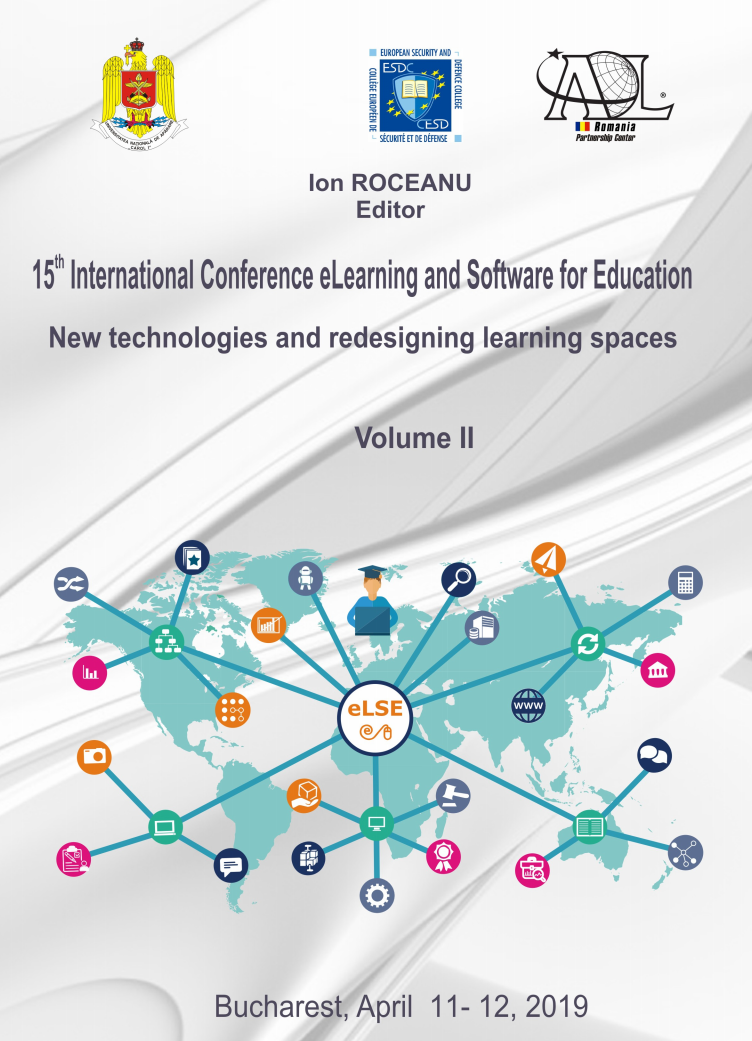Innovative Technology in the Language Class-Learning by Laughing, with Memes Under Focus
Innovative Technology in the Language Class-Learning by Laughing, with Memes Under Focus
Author(s): Yolanda-Mirela CatellySubject(s): Social Sciences, Education, Higher Education
Published by: Carol I National Defence University Publishing House
Keywords: image macro/meme design; soft skills; hard skills; engineering higher education; EST; role of humor.
Summary/Abstract: In the contemporary society worldwide, with a dramatic change of mentality among the young generations, particularly starting from the so-called Millennials, amendments to the traditional approaches and new innovative forms of education to be designed and implemented stand as the real challenge for the teachers of any discipline, in order to provide solid support to the learners, thus contributing to their courses efficiency and to the trainees’ learning success. At the trainer’s disposal there is today a plethora of e-learning means, with proven impact in augmenting effectiveness of the instructional process at all levels. Therefore, in the educational setting presented here, viz. engineering students reading Computer Science at bachelor level, with English as the medium of tuition, within the English for Science and Technology – EST course, the foreign language teacher, in search for variety, novelty and successful exploitation of humor and creativity in the language class, on the basis of some new and quite popular IT ‘tools’, has designed and taught a cycle of activities focusing on image macros, more generically labelled as memes. Thus, the paper is meant as a strong plea for encouraging learning by setting creativity, fun and avoidance of monotony elements in the lesson. Moreover, the linguistic aspects, as well as those culture-related, are also of significance, since, in order to create memes, besides the technical skills which are compulsory, one really needs a substantial array of softer skills, such as good command of the target language, sensitivity regarding cultural differences and, last but certainly not least, a great sense of humor. Hence, the approach proposed here hypothesizes that, by embedding a cycle of tasks focused on designing and discussing about such a new and popular form of social media, having multiple functions and often becoming a viral vehicle for communication, of the marketing type for instance, or for spreading opinions among the masses, the repertory of (transferable) hard and soft skills alike of the students/would-be engineers will develop, together with their chances of employability on an ever more demanding job market (inter)nationally. Consequently, the aim of the paper is a multiple one, i.e. to: (i) encourage the students to make use of their technical skills in IT, but in an original manner – by creating memes, necessarily combining them with the linguistic and even creative writing skills, which could turn into a real asset for them as future specialists, required to advertise for the products they manufacture or to socialize in professional environments, and (ii) design authentic tasks that are different from the usual, sometimes repetitive, ones the learners are used to, as such activities are based, apart from the learners’ technical knowledge, on the intelligent thought-provoking and laughter-generating use of the foreign language. The eclectic, communicative core approach task package is described, and the pedagogic rationale is given for the manner of sequencing them.
Journal: Conference proceedings of »eLearning and Software for Education« (eLSE)
- Issue Year: 15/2019
- Issue No: 02
- Page Range: 39-48
- Page Count: 10
- Language: English

